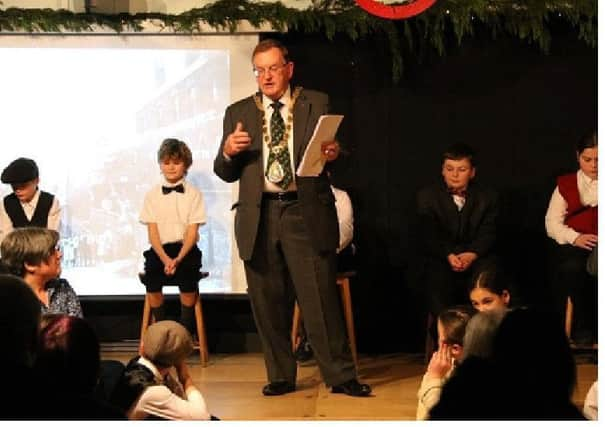School goes back in time to 1917


The year six class of Stonelow Junior School have been taking part in the project for the past 12 months, as they looked back 100 years finding out what life was like in 1917 as World War raged.
A spokesman at the school said: “We have been able to do this because of a Heritage Lottery First World War Then and Now grant. We have been helped by Derbyshire Records Office, Dr Nicola Verdon, Dronfield Heritage Barn and Whitworks Adventures in Theatre. Here we are working with Rebecca Sheldon from Derbyshire Records Office.”
Advertisement
Hide AdAdvertisement
Hide AdShe added: “We have found out all sorts of things about what life was like in Dronfield and the people that lived here. In December 2017 we shared our discoveries with our community, including Dronfield’s Mayor through a celebration performance and free book. The Mayor was so enthusiastic about the project that he took a copy of the book for every member of the Town Council.
“We found out that 1917 was without doubt the grimmest year of the war for most of the country. People had already endured three years of fighting that appeared to have no end. All families had experienced losses of various kinds.”
One of the poignant stories that grabbed pupils’ attention was that of Elizabeth Mather. She had an extraordinary and appalling 1917. Not only was her husband away fighting but her brother, John, was in the Sherwood Foresters. His parents received a letter from his commanding officer reporting his death on April 23 1917. They did not get a body to bury like many families.
And then there was the mystery of her nephew, Ernest Mather, which started on July 16 1917. His disappearance after work at the Lucas foundry was reported in the Derbyshire Times in July 1917.
Advertisement
Hide AdAdvertisement
Hide AdOn August 3 1917, the Sheffield Telegraph reported that Ernest’s body had been discovered near some disused coke ovens in Unstone. Ernest was so badly decomposed that the coroner had to declare an open verdict. The people on the home front had to be extremely resilient. They survived and they kept going and the school spokeswoman said they were here in Dronfield 100 years later to retell some of their stories. Ann Brown, Dronfield Heritage Trust archivist, called it a “Brilliant presentation”.